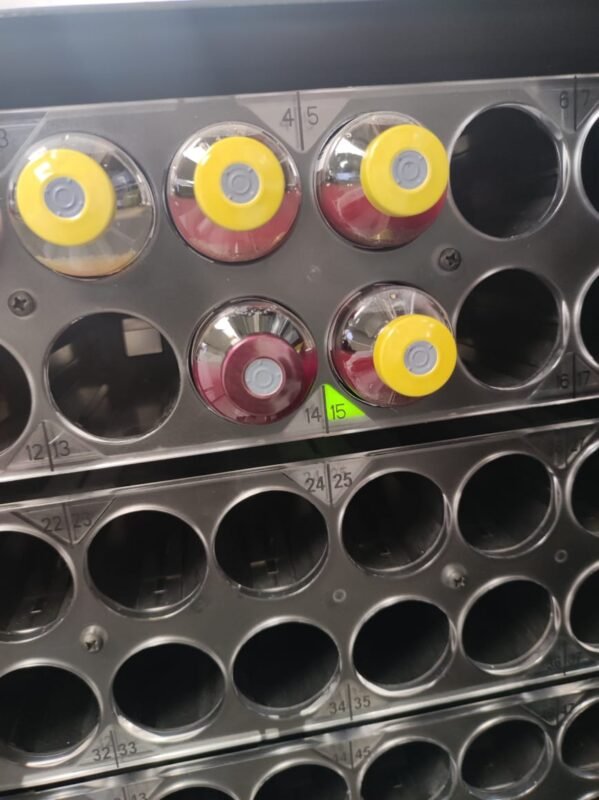Blood cultures are a standard diagnostic tool, especially when infection is suspected. The suspicion of infection that would lead to a blood culture test is mostly fever. However, not every fever warrants a blood culture. As important as blood cultures are in diagnosing infections like sepsis or bacteremia, knowing when to use them is an art. I mean, you have to have clinical experience to judge a patient’s condition properly.
One thing that advanced hospital settings use before ordering blood cultures is to refer to established standard guidelines or checklists. If a patient does not tick the minimum buttons, a blood culture test will not be ordered for the patient.
Some of these checklists will be discussed below.
Table of Contents [hide]
Blood Culture Indications
Signs for Blood Culture Collection
Here’s when you should really consider getting those blood cultures, especially if you do not have an established guide at your place of work.
- Your patient is running a fever, but they’re also feeling weak and dizzy (that’s hypotension)
- They’re breathing faster than usual
- They seem confused or just not quite themselves
This is a bit easy for the nurses to monitor in a hospital setting, but suppose you are in a non-hospital setting, and those signs are presented. You would have to know in the back of your mind what is at play, and that is clinical knowledge we are talking about.
Before I proceed, I would like to provide a clinical background to one of the indicators of Blood Culture tests.
A feeling of fever, weakness and dizziness
The presence of bacteria in the blood(bacteremia), especially in an overwhelming quantity, causes fever. The fever is caused by the release of pyrogens by the bacteria. If the bacteria is Gram-negative, the pyrogen is lipopolysaccharide (LPS), a component of the outer membrane of Gram-negative bacteria. If the bacteria is Gram-positive, the pyrogen is entero(toxins). These pyrogens trigger (annoy) the body’s immune systems.
For clarity, pyrogen is a substance that causes fever by triggering the body’s immune system to raise its temperature.
The immune system responds by releasing its own endogenous pyrogens, which are cytokines (e.g., interleukin-1). These pyrogens travel to the hypothalamus, the part of the brain that regulates body temperature, and signal it to increase the body’s temperature.
This rise in temperature is meant to create an inhospitable environment for pathogens, as many of them thrive best at normal body temperatures. Fever also boosts the efficiency of immune cells in fighting the infection. So, in essence, fever is your body turning up the heat to ‘burn’ the bacteria. Unfortunately, high temperatures are also dangerous to our bodies.
That is the fever part; this causes the weakness and dizziness:
When the immune system responds by releasing chemicals like cytokines, they can cause vasodilation (widening of blood vessels), which increases blood flow to the affected area to help fight off the infection.
However, this vasodilation can also lead to a drop in blood pressure because the blood vessels are wider, reducing the overall vascular resistance.
Additionally, severe infections can lead to systemic inflammation, which can further lower blood pressure by causing fluid to leak from the blood vessels into surrounding tissues, reducing the volume of blood circulating in the body. This leads to weakness and dizziness, a dangerous condition called hypotension.
So, a fever on its own isn’t always a reason to grab culture bottles!
When to Avoid Unnecessary Cultures

Sometimes, it’s okay to hold off on cultures. For example:
- If your patient’s already on the right antibiotics for a known infection and isn’t getting worse
- When there’s just one lonely fever with no other symptoms to keep it company
Clinical Decision-Making in Blood Culture Collection
Patient Condition
When you’re deciding whether to draw cultures, think about:
- How does your patient look overall – are they sick or just under the weather?
- If the fevers keep coming back, even if the patient seems fine otherwise
- What other health issues do they have that might put them at risk for a blood infection
Balance Protocols and Clinical Judgment
Sure, your hospital might have rules about when to draw blood cultures. But remember, your brain is just as important as any protocol! Use your judgment and consider the whole picture.
Best Practices for Blood Culture Collection
Timing and Technique
Timing is everything, even in blood culture ordering and collection. Try to draw the blood when your patient’s temperature is climbing. But don’t stress if you can’t – getting them done is more important than waiting for the perfect moment.
When you’re drawing the blood:
- Keep everything super clean
- Get enough blood to fill the bottles
- Don’t let the blood sit around—get it into the culture bottles immediately and straightaway to the lab.
Blood Culture Contamination

Nobody wants a false positive result, and it’s one of the reasons blood culture results have to be interpreted with caution. To keep things clean:
- Scrub up like you’re about to perform surgery
- Clean your patient’s skin really well with the proper disinfectant before drawing blood.
- Everything you use must be sterile, and handle the samples carefully before sending them to a lab.
Repeat Blood Cultures: When and Why
Indications for Follow-up Cultures
Sometimes, you need to go back for seconds. Draw more cultures if:
- Your patient starts looking worse like they might have a new infection
- The antibiotics aren’t working after a few days
Monitoring Patient Progress
Blood cultures are not always used for diagnosis; they can help you see if the treatment is working. But don’t just keep drawing them for fun—there needs to be a good reason, as I mentioned above.
Challenges and Considerations
Pressure from Senior Staff and Nurses
Sometimes, the rules are broken, especially by our senior colleagues who order us to do stuff we think is out of line. If you’re new to the game, you might feel pushed to do blood cultures just because someone has a fever. You might need to stand your ground.
Use your brain, explain why you’re choosing, and don’t be afraid to ask for help if you’re unsure.
Documentation and Communication
If you draw and send blood cultures to the lab, write everything down. It helps the team following you to know what’s going on, backs up your decisions, and keeps everyone on the same page. Plus, good notes can save you if questions come up later.
Sometimes, nurses call to ask if a particular patient has a blood culture sample in the lab. I am tempted to ask, “Don’t you have documentation?” I end up checking our system with the patient details to see if we have received the sample.
So there you have it – the ins and outs of when to draw blood cultures. Remember, it’s not just about following rules. Use your brain, trust your gut (and your training)
I stumbled on some Silly questions about blood cultures on Redditt which lead to some pretty smart answers. Check it out if you want.

